本系列笔记为方便日后自己查阅而写,更多的是个人见解,也算一种学习的复习与总结,望善始善终吧~
求解逆矩阵
A−1=1det(A)CT,其中CT为代数余子式cofactors组成的矩阵的转置。
要证明A−1=1det(A)CT,即证明ACT=det(A)I
对角线上的值为det(A),这很好理解,但是为什么其他位置的元素全是0呢?,我们观察结果的第二行第一列,其值等于A的第二行a21,a22...a2n分别与c11,c12...c1n相乘,这就像是把原本的矩阵中第一行变成同第二行一样的值,然后求这个新的矩阵的行列式,明显这个行列式的值为0。(行列式的性质4,相关资料
http://blog.csdn.net/a352611/article/details/49746061)
克莱姆法则 Cramer′s Rule
老问题,这个法则是关于Ax=b的公式:
Ax=b⇒x=A−1b=1det(A)CTb
关键在于CTb,它影响了x各个分量的值:
CTb的各个分量很容易让人想到行列式determinant,而克莱姆发现了B1,B2...Bn这些矩阵的规律,其实我们这么写的时候也能才出B矩阵长什么样。
这样的公式具有数学上的美感,我们可以知道x每一个分量由哪些东西决定,就如果之前的求逆公式一样,这二者都给我们带来了纯代数的表达式,但实际计算时我们不会去用他们,因为计算量太大,不适合编程,消元法可以很好的解决问题,matlab就是用消元法来求解的。
行列式的几何意义
如何从几何理解行列式determinant?
首先我们把矩阵中的column vector画在空间中,很明显在N维空间里面我们就有N个向量(方阵才有行列式)
二维空间:
行列式determinant就是这个梯形的面积
三维空间:
行列式determinant就是这个长方体的体积
为什么?因为求解行列式的过程可以理解为用pivot消元的过程,行列式的值最终为所有pivot的乘积,若所有的pivot不为0即各个column vector线性无关,那么我们最终会得到一个除了对角线上的pivot之外其他位置全部为0的矩阵,这个矩阵的每一个column vector都相互垂直,实际上这些vector就是那些垂线,这些垂线的乘积就是我们所谓的面积、体积或者四维以上我叫不出名字的东西。这样的东西看起来像个盒子有木有,老师也很形象的叫它box。
PS:另一位仁兄的笔记
http://blog.csdn.net/suqier1314520/article/details/13883537







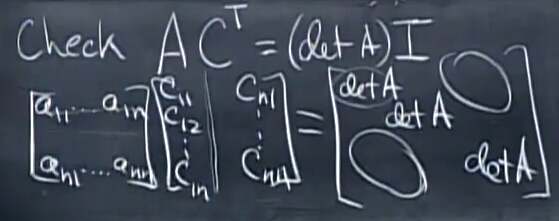
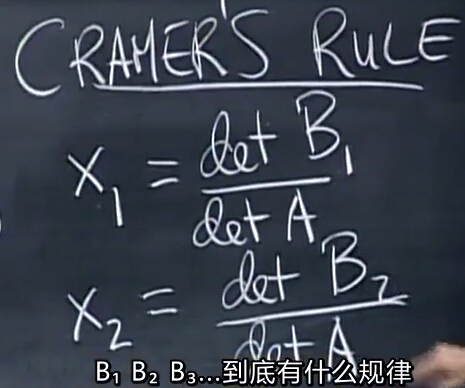
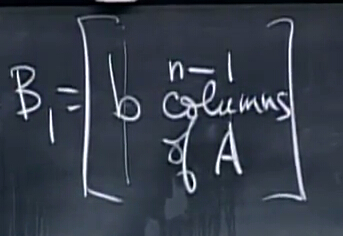
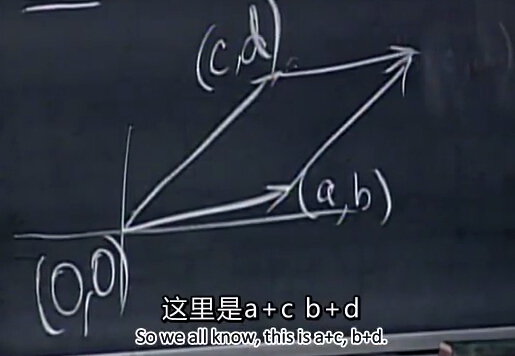
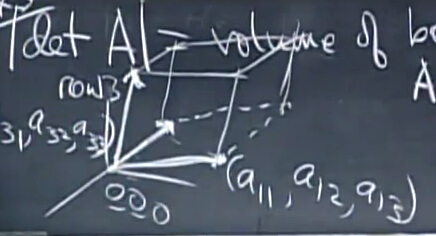














 129
129











 被折叠的 条评论
为什么被折叠?
被折叠的 条评论
为什么被折叠?








